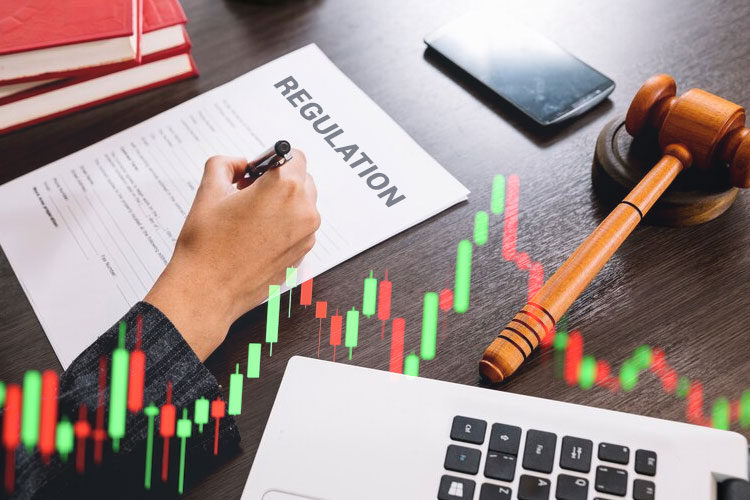Editor's Choice
- Home
- Features
- _Forex Basics
- _Technical Analysis
- _Fundamental Analysis
- _Trading Strategies
- _Risk Management
- _Trading Psychology
- Forex Brokers & Tools
- Market Analysis & Updates
- Advanced Topics
- Coming Soon
- _Legal & Compliance
- _Community & Interviews
- _Tools & Resources
- _Cryptocurrency & Forex
- _Seasonal & Niche Topics
- Case Studies
How to Verify a Broker’s Regulation (FCA, ASIC, CySEC): A Step-by-Step Safety Guide
Choosing an unregulated broker is like handing your wallet to a stranger. Scams, stolen funds, and manipulated trades are rampant in the Forex and CFD industry—but you can avoid them by verifying a broker’s license. In this guide, you’ll learn how to check regulation under top-tier authorities like the FCA (UK), ASIC (Australia), and CySEC (Cyprus), spot red flags, and protect your hard-earned money.
Why Regulation Matters
Regulated brokers must adhere to strict rules that protect traders, including:
- Segregated Client Funds: Your money is kept separate from the broker’s accounts.
- Compensation Schemes: Up to £85,000 (FCA) or AUD 250,000 (ASIC) if the broker goes bankrupt.
- Fair Trading Practices: No manipulation of spreads or execution.
- Transparency: Regular audits and financial reporting.
Unregulated brokers? They operate in the Wild West—zero accountability.
Step 1: Identify the Regulator
Brokers often claim to be “regulated,” but not all licenses are equal. Focus on these top-tier regulators:
- FCA (Financial Conduct Authority) – UK
- ASIC (Australian Securities and Investments Commission)
- CySEC (Cyprus Securities and Exchange Commission)
Avoid brokers regulated only by offshore authorities like:
- VFSC (Vanuatu)
- FSA (Saint Vincent and the Grenadines)
- FSCA (Mauritius)
Step 2: Verify the License Number
Every regulated broker has a unique license ID. Here’s how to check it:
For FCA-Regulated Brokers
- Go to the FCA Register.
- Search by the broker’s name or license number (e.g., “123456”).
- Confirm:
- The name matches exactly.
- “Status” is Authorized.
- “Permissions” include FX/CFD trading.
Red Flags:
- “EEA Authorised” (not UK-regulated).
- Clone firms with similar names (e.g., “eToro vs. eTorro”).
For ASIC-Regulated Brokers
- Visit the ASIC Connect portal.
- Use the “Professional Registers” search.
- Enter the broker’s ACN (Australian Company Number) or name.
- Confirm:
- The entity is listed under “Current AFS Licensees.”
- The license includes “Margin FX” or “Derivatives.”
Red Flags:
- “ASIC registration” ≠ “AFS License.” Registration alone doesn’t permit CFD/FX trading.
For CySEC-Regulated Brokers
- Check the CySEC Register.
- Search by name or license number (e.g., “123/12”).
- Confirm:
- The broker’s CIF license is Active.
- “Services” include FX/CFDs.
Step 3: Cross-Check Broker Details
Scammers often clone legit brokers’ licenses. Verify these details match the regulator’s database:
- Company Name: “eToro (UK) Ltd” vs. “eToro LLC.”
- Website URL: Regulated brokers must list their licensed entity’s site (e.g., uk.eToro.com for FCA).
- Contact Info: Phone numbers and addresses should align with the regulator’s records.
Step 4: Look for Compensation Scheme Membership
Top regulators require brokers to join investor protection funds:
- FCA: Financial Services Compensation Scheme (FSCS).
- CySEC: Investor Compensation Fund (ICF).
- ASIC: No statutory compensation, but stricter capital requirements.
Check the broker’s “Legal” or “About Us” page for membership proof.
Step 5: Avoid These Scam Tactics
- “CRFIN” (fake Russian regulator) or “CRF” (clone of CySEC).
- Brokers “regulated” in Belize, Cayman Islands, or Vanuatu.
- A broker’s .com site may be unregulated, while .co.uk is FCA-regulated.
Case Study: Spotting a Scam Broker
Scenario: “GlobalFX” claims ASIC regulation (License #123456).
- ASIC Check: License #123456 belongs to “Global Finance Pty Ltd,” not “GlobalFX.”
- Website: No mention of AFSL or segregated accounts.
- Red Flag: Pushes high returns with “zero risk.”
Verdict: Clone firm scam.
What If the Broker Isn’t Regulated?
Proceed with extreme caution. Ask:
- Are they transparent about their location?
- Do they offer negative balance protection?
- Are client funds segregated?
If unsure, pick a broker from our list of regulated brokers.
Regulator Comparison Cheat Sheet
Regulator | Compensation | Leverage Limits | Key Feature |
FCA | £85,000 | 1:30 (Retail) | Gold-standard protection |
ASIC | None | 1:30 (Retail) | Strict capital requirements |
CySEC | €20,000 | 1:30 (Retail) | EU passporting to other countries |
Final Checklist Before Trading
- Verified license on the regulator’s official site.
- Matches in company name, URL, and contact details.
- Segregated accounts and compensation scheme mentioned.
- No offshore licenses or clone firm red flags.
Conclusion
Regulation is your first line of defense in the risky world of trading. A 5-minute check could save you from losing thousands to a scam. Bookmark the FCA, ASIC, and CySEC registers, and never skip due diligence—even if a broker “looks” trustworthy.
Need a Safe Broker? Explore our verified list of FCA, ASIC, and CySEC-regulated brokers.
You may like these posts
Editor's Choice
Popular Posts
Footer Menu Widget
Copyright © 2025 Forxeology All Right Reserved









Social Plugin